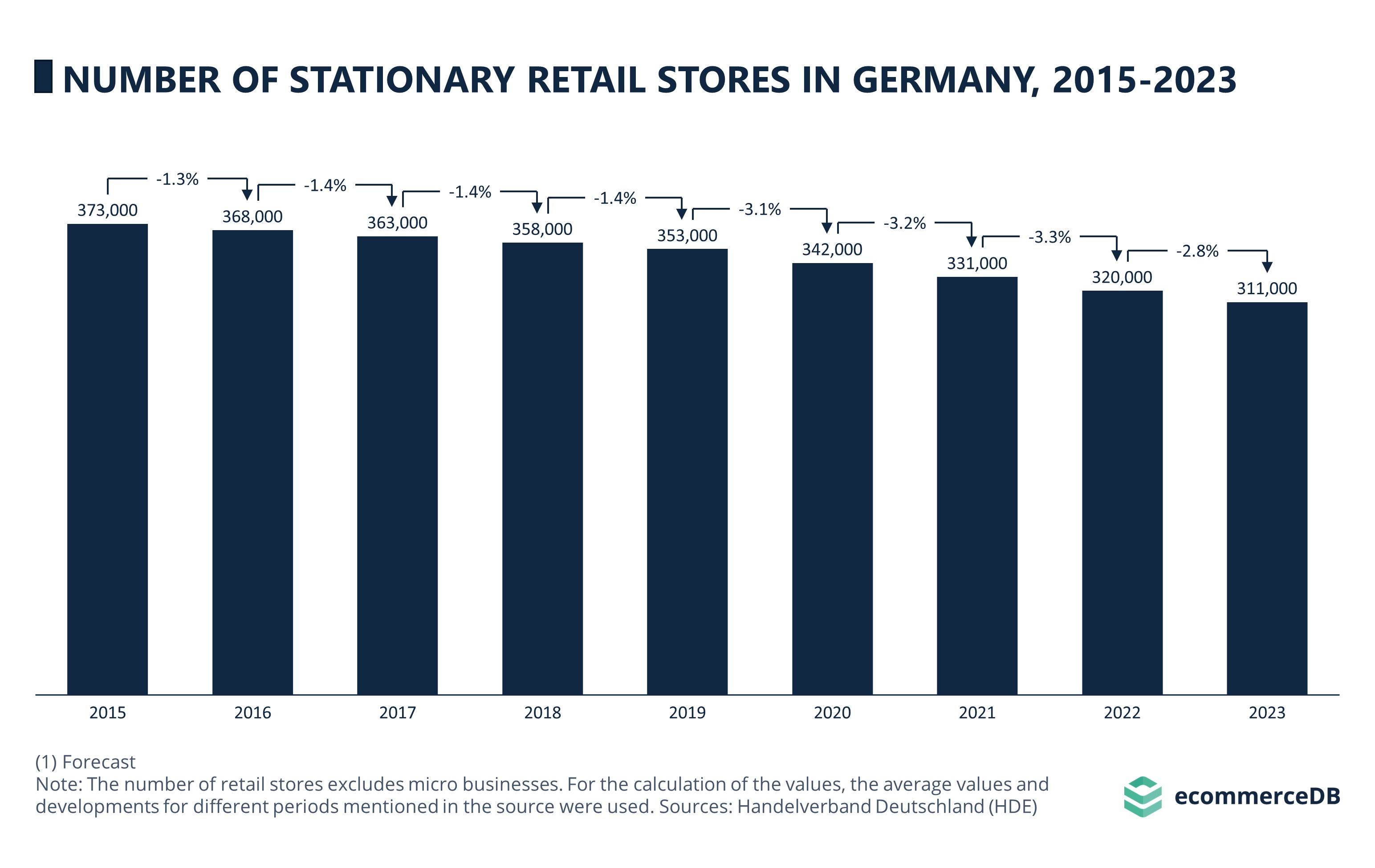Is the End to Stationary Retail Near?
June 06, 2023
The unprecedented Covid boom in eCommerce is over – according to Statista Digital Market Insights, the record growth rates of 30% respectively 24% year-on-year in the two corona years 2020 and 2021 could not be repeated in post-pandemic 2022. Worldwide revenues in eCommerce more or less stagnated between 2021 and 2022 at about US$3.5 trillion. The boom in eCommerce was to a large extent at the expense of stationary retail, which saw slumping customer numbers and sales due to lockdowns and people’s reluctance to go to stores where they could possibly contract the virus. It is now tempting to assume that stationary retail has recovered, now that eCommerce is seeing stagnating sales. However, the opposite is true. The past months brought along more burdens for consumers and retailers alike. The surging energy and resource prices put more pressure on retailers and force them to cut back on their margins, which is why many struggle to survive. In addition, the high inflation rates hit hard on consumers, of whom many have to tighten their belts. The reduced purchasing power consequently reduces sales for retailers. The situation also reflects in the development of the number of brick-and-mortar businesses:

The German retail association HDE has recently published data on the development of stationary retail in Germany. According to the analysis, the number of retail stores in Germany continues to decline in 2023, at a year-on-year rate of -2.8%, which is twice as high as the pre-Covid rate. German stationary retail will thus lose 9,000 stores this year, most of them small-scale non-food stores, according to the source. In the years 2020 through 2022, which were heavily influenced by the corona pandemic, the German retail sector lost 11,000 stores per year, which is more than twice as many as in the years before the crisis, when there was an annual decline of 5,000 stores or 1.4%. In total, since 2015, 62,000 brick-and-mortar stores in Germany will have closed by the end of 2023. In order for city centers not to die, the industry has to rethink their concepts. A combination of online and offline services might be an approach towards the fight against more vacancies: Flagship stores of eCommerce brands, pick-up stores or showrooms are some examples of how city-center stores can be integrated into multichannel businesses. In the course of their “Stores of the Year” competition, the German retail association HDE honors especially innovative store concepts on an annual basis. The 2023 award winners include a Mister Spex flagship store in Cologne, and an integrative gaming and shopping center run by Mediamarkt/Saturn in Berlin.
Related insights
Article
eCommerce Market in Europe 2024: Worth 1 Trillion Dollars Soon
eCommerce Market in Europe 2024: Worth 1 Trillion Dollars Soon
Article
Walmart, Amazon & Shein: Which Store Ranks First in U.S. Online Fashion?
Walmart, Amazon & Shein: Which Store Ranks First in U.S. Online Fashion?
Article
Video Games Market in 2024: Market Revenues, Segments, Regions & Top Companies
Video Games Market in 2024: Market Revenues, Segments, Regions & Top Companies
Article
Top Amazon Rivals: The Tech Giant’s Biggest Competition
Top Amazon Rivals: The Tech Giant’s Biggest Competition
Article
Top 10 Online Stores in the U.S: Amazon Sold More Than All Other Top 5 Stores Combined
Top 10 Online Stores in the U.S: Amazon Sold More Than All Other Top 5 Stores Combined
Back to main topics